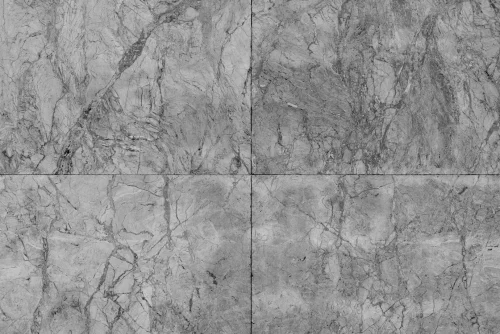
What is a Home Courtyard and How Does it Work?
February 21, 2025
Waterproofing In Terrace: A Step-by-Step Guide to Leak Prevention
February 24, 2025Porcelain tiles have become a focus in modern home design. The grace and elegance of porcelain tiles beautify both our homes and public places. But have you ever thought more about where these tiles came from? Why have these tiles become such a mark of elegance and grace in modern design?
In our post for today, we’re taking a look at what porcelain tiles are, their types, and what you should keep in mind when choosing them for your home. Moreover, we’ll also look into the types of porcelain tiles, the benefits of using them for tiling, and what to consider while buying them.
So, let’s get started!
What Are Porcelain Tiles?
The term porcelain comes from the word “porcellana”, meaning earthenware made of clay. Porcelain tiles have a smooth surface and designs that can make your floors and walls ooze sophistication. Porcelain tiles are strong, durable, and varied when it comes to designs, making it a versatile tile to meet your needs (and taste).
Now, the questions come, “What is porcelain tile?” “What is ceramic tile?” and “How’s it different from porcelain tiles?”
Ceramic tiles are thin slabs of clay, minerals, and other raw materials baked at a high temperature. Ceramic tiles are also a common choice for floors and walls as they are moisture-resistant and long-lasting.
However, due to their similarities, people confuse ceramic or porcelain tiles with one another. Yet, porcelain tiles are considered a more polished version of ceramic tiles. So, what is the difference between ceramic and porcelain floor tiles?
The difference between ceramic and porcelain tile lies mostly in their look and manufacturing. Porcelain tiles are smooth, whereas ceramic tiles have a more coarse surface.
In manufacturing, porcelain uses denser materials such as clay, kaolin, and quartz mixed with colour pigments. Moreover, porcelain is non-porous, making it good for high-moisture areas like the bathroom. Ceramic tiles whereas, are porous and better for dry spaces.
Between porcelain and ceramic, the former is more scratch-resistant, making it good for heavy foot traffic areas, whereas the latter is softer and more suitable for houses. Ultimately, porcelain tile and ceramic tile have a huge cost and installation difference.
Ceramic tiles are cheaper and easier to install compared to porcelain, which is heavier and more expensive.
Read Also: The difference between “ceramic vs vitrified tiles”? Which one should you choose for your home?
Types of Porcelain Tiles
1. Glazed
Glazed porcelain tiles have a protective coating that’s applied during the manufacturing process. They have a glossy finish to them, making them stain and water-resistant. Glazed porcelain can be good for kitchens, bathrooms, and also living rooms.
2. Unglazed
Unglazed tiles don’t have a coating, making them look raw look. Despite that, these porcelain tiles are slip-resistant, making them ideal for outdoor spaces and commercial use.
3. Full-body
Full-body porcelain has a constant colour and texture, making it long-lasting. Because of their consistency in colour and texture, cracks and scratches become less noticeable. These types of porcelain tiles are good for high-foot-traffic spaces.
4. Double-layered
Double-layered, as the term suggests, have two layers of porcelain, making them thick and long-lasting. These types of porcelain can be best used for commercial areas such as malls.
5. Polished
Polished tiles have a glossy and mirror-like finish to them, adding a dash of luxury to them. However, they need extra sealing to prevent staining, as they have a porous surface.
6. Textured
Textured porcelain tiles look like wood, stone, or even concrete. They are more visually pleasing, making them ideal for outdoor areas and even bathrooms.
Also Read: What are the Different Types of Tiles Available in India: A Complete Guide for Homeowners
Why Choose Porcelain Tiles For Home Tiling?
Some reasons porcelain tiles can be ideal for your space can include:
1. They Are Durable
Porcelain tiles, compared to ceramic, are resistant to everyday wear and tear. These tiles can last longer, even in high foot traffic areas, without losing their elegance.
2. They Are Water-Resistant
Porcelain tiles have low porosity, which makes them resistant to water, spills, and even stains. They can be ideal for bathrooms and kitchens where other tiles can fade and spoil.
3. They Are Low Maintainance
Compared to other tiles, porcelain tiles are easy to clean and maintain. A simple wipe with the mop can keep them clean and pristine-looking.
4. They Are Scratch-Resistant
Porcelain tiles are manufactured in ways to prevent scratches from moving furniture, claw marks from pets, and even heavy foot traffic.
5. They Don’t Fade Easily
Even as years pass, porcelain tiles don’t lose their colour and finish, even when they are installed outdoors. Other tiles, in comparison, can fade in sunlight, but porcelain tiles maintain the colour for a long time.
6. They Are Eco Friendly
Another benefit of porcelain is that they are eco-friendly, reducing environmental damage and ensuring long and sustainable floor and wall tiling.
What to Know Before Buying Porcelain Tiles?
Before you purchase or consider installing porcelain tiles on your floors and walls, here are some things you need to know
Type and Finish
Before you buy a porcelain tile, pick the type you want and the finish you want. Consider the areas you want to install the tile in before buying.
Size and Thickness
Also, consider the size and thickness of the porcelain tile before you buy them. Large tiles have a more consistent look, while smaller ones have more intricacy to them. Also, thick tiles are ideal for everyday foot traffic, while thinner ones are better options for walls.
Slip and Stain Resistance
You need to also check the slip resistance on the tile before you purchase or install it. If you’re thinking of installing porcelain tiles in wet areas like bathrooms or shower stalls, then check for slip and stain resistance.
Designs and Textures
Porcelain tiles come in different colours and textures, so pick ones that match your interiors or the style you’re going for. Porcelain can also be good to match aesthetics.
Related Read: Top Wall Tile Design for Homes to Elevate Your Interiors
Final Words
In tiles, porcelain is durable, water-resistant, and suitable for almost all types of areas. Not only that, but the colours and textures of these tiles give off a sophisticated vibe and exude elegance.
So, the next time you see yourself admiring porcelain tiling on floors or walls, pause and appreciate the long way the material has come and how far it will go in the future.
About Green Fortune:
Designing a home means choosing the right materials. Green Fortune uPVC windows and doors are known for being durable and low maintenance, much like porcelain tiles are known for their elegance, style, and sophistication. Whether you’re renovating your home or designing one from scratch, using the high-quality materials that Green Fortune offers can make all the difference.
Learn more about Green Fortune products by clicking here.








